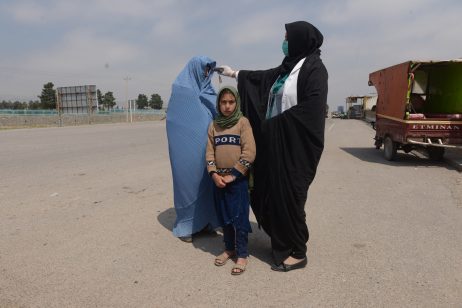By Neeta Lal
 In this May 30, 2020 photo, Indian migrant workers and their children look out from the window of their train in Prayagraj, India as they return to their villages.Credit: AP Photo/Rajesh Kumar Singh
In this May 30, 2020 photo, Indian migrant workers and their children look out from the window of their train in Prayagraj, India as they return to their villages.Credit: AP Photo/Rajesh Kumar Singh
Images of thousands of Indian migrant laborers trudging home barefoot with women and children in tow, or packed sardine-like in overcrowded trucks and trains to be ferried to their native villages from host states have been tugging at the nation’s conscience for months.
Ever since the country of over 1.3 billion people was locked down on four hours’ notice on March 25, the migrants’ mass exodus from cities has created a humanitarian and health security challenge and an unprecedented logistical nightmare. Bereft of accommodation and savings, the poor suddenly found themselves out of jobs with the overnight shutdown of factories.
According to industry estimates, about 80 percent of India’s 470 million workers are employed in the unorganized sector. Pulling rickshaws, selling vegetables, building malls, or working as domestic help, they toil to keep the wheels of the informal economy turning.
The hitherto invisible migrants’ sudden explosion into mainstream media coverage amid the COVID-19 lockdown also shone a light on their Dickensian working conditions, exposing the dark underbelly of India’s labor industry. Reports have highlighted how the underpaid workers remain outside of the ambit of laws, with no social security nets to boot.


















